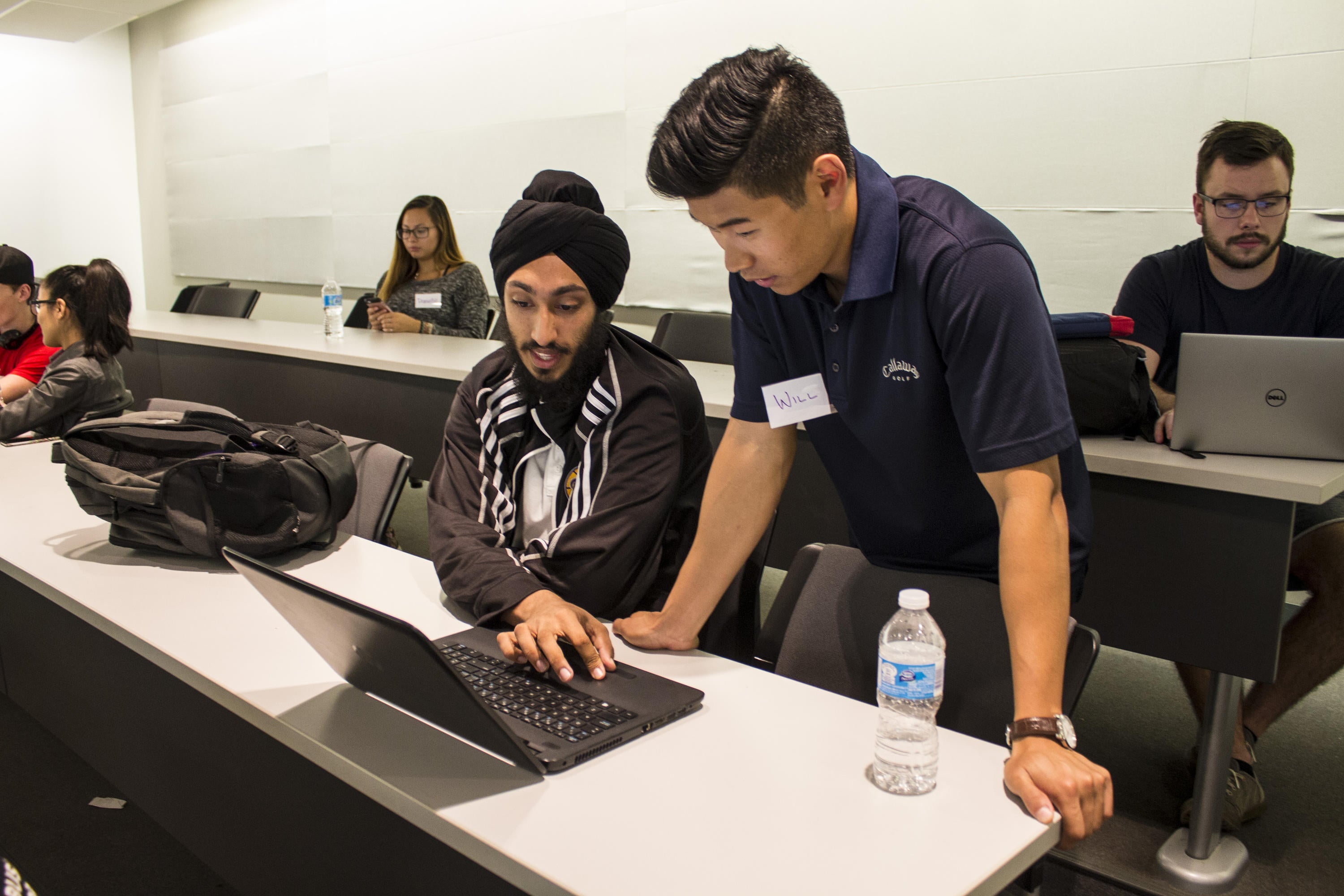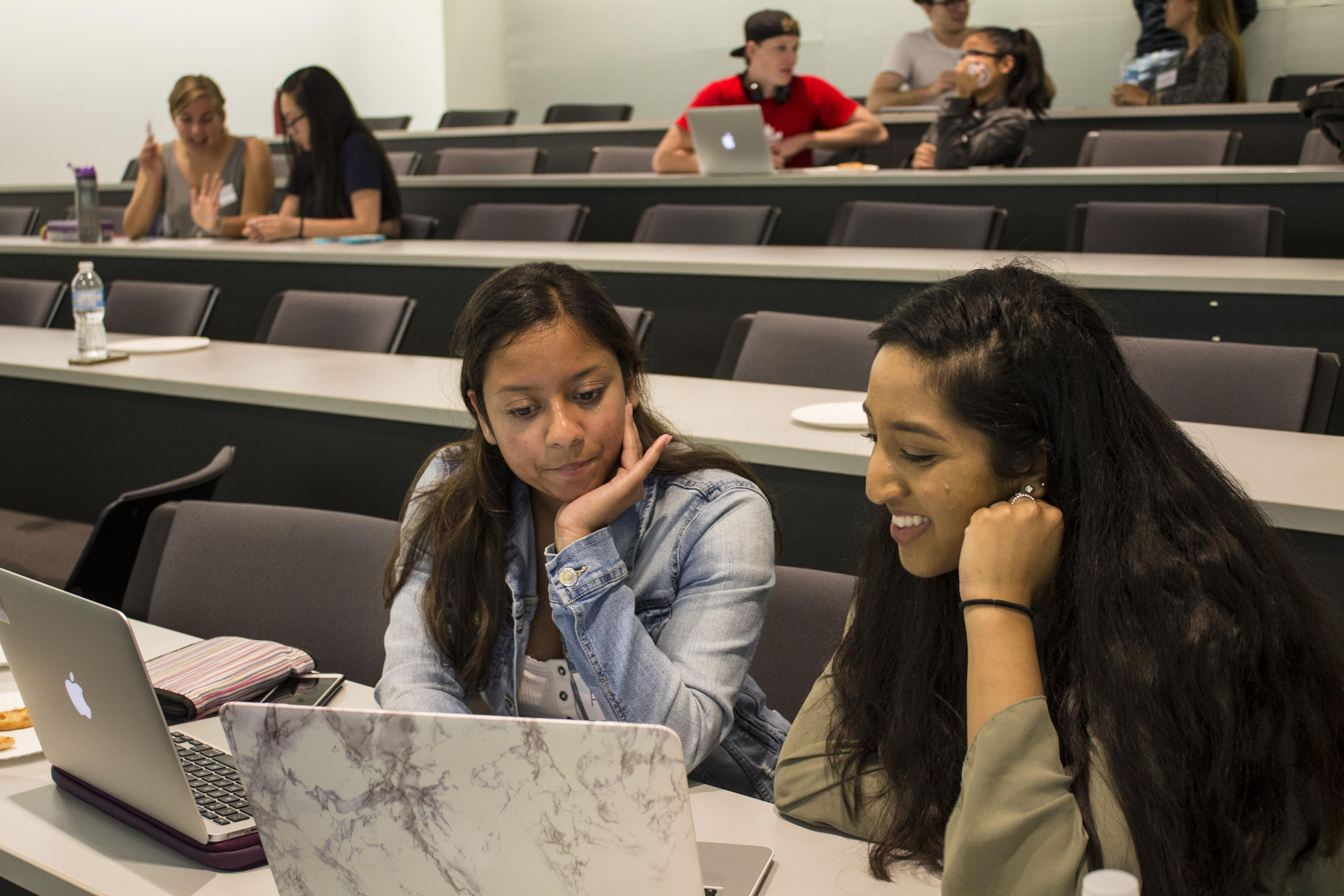
The continuous round is the second application period that the Centre for Career Action opens for students to continue applying for co-op positions, if they were unsuccessful in the first application period. Unlike the first round, the continuous round repeats every week with job applications in the beginning and interviews at the end of the week.
Landing the interview
If your resume returned fewer interviews than you had hoped, it might be time to consider a resume revamp. Reach out to a trusted friend or attend one of the Science and Business Ambassador Team (SBAT)’s resume critiquing sessions to get honest and relevant feedback from experienced students about what to change in your application journey.
What if you missed the SBAT resume critique session? Don’t worry, we haven’t gone anywhere! We’re now offering a full-time resume critiquing service! Submit a form using this link for a personalized critique from our crew.
Impressing the judges
Maybe landing the interview isn’t the problem. Maybe it’s keeping the employers interested during your interview. For this, just remember these three words: Preparation, Brevity, Practice.

Preparation
You don’t get a sample of the interview questions before you walk in, but it doesn’t hurt to prepare some answers that could work as answers for multiple, similar questions. Employers are essentially curious about all the same details but have learned to ask for those details in different ways. Having some of these concepts prepared in advance will make sure you put your best foot forward and don’t blank out mid-answer.
So you’ve got your pen and paper ready, but where do you start? The easiest place to look for hints is in the job description. Employers don’t use thesauruses to make these job descriptions sound flamboyant, each word is strategically used to describe their ideal candidate.
Start by picking a few keywords or qualities the employer has sprinkled in the description, figuring out how you can demonstrate them with your background and incorporate this into your answers. Make sure you emphasize those qualities and use those keywords when preparing your responses. It’ll show your interviewer that you took the time to read and understand the details they put out. If you have truly done it or have it in your academics, your jobs or your course work, use the terms “proven experience” or “demonstrated expertise”. For example, if they mention that they are looking for a candidate with excellent time management skills, it’s about time you tell someone about all the deadlines you hit at your last job during the busiest month of the year!
Here are the topics you can prepare for and the types of questions for which they’ll come in handy:
- Some key areas to research when doing company background research are what they do, mission statement, core values and goals, the “about us” section. An employer will value the time you took to learn about their company because it shows how interested you really are. Take a quick peek at the company’s LinkedIn -- you could find some great content to help direct your responses to their circumstances and spark some interest in YOU! Learn about the senior staff in the company on LinkedIn or even on the company website. Reading about the higher-ups can help you find an important connection that you can bring up in the interview -- such as company culture, common interests, career journeys, etc.
- You could do all of this research by yourself, but you could also give a shout to your SCBUS community. You’re guaranteed to find someone who has worked for the employer or a similar company. Seriously, it’s like finding hay in a haystack. Wouldn’t it be nice to say something like “My classmate Bill worked as a Business Analyst here and mentioned your culture was inclusive and accepting, which is something I value in the workplace and made me interested to apply”? Your personal connection will make you stand out from the tons of other students applying for the same role.
Company background
What do you know about the company?
What are you passionate about?
Why do you want to work for this company?
What are your goals?
What do you want to take away from this placement?
Strengths & weaknesses
What makes you stand out?
What do you think your areas of improvement are?
What are your best qualities?
Why should we hire you?
How would your friends describe you?
Give an example of how you solved a workplace problem.
Give an example of how you helped your previous employer.
Tell me about yourself
Stats & statements - stats about your impact in your last company, clubs, etc.
What was your impact on your previous company?
What were the biggest challenges you faced at your last placement?
Where do you see yourself in 5 years?
How do you measure success?
Brevity
Storytelling is an art, but interviews give you limited time to use it. Every minute counts, so your responses should be terse and concise -- packed with only the most important details. Each answer should be structured clearly, and practicing with this method is sure to keep interviewers engaged. You can practice this when you answer questions in class.
S - Situation
When answering a question, it’s crucial to provide the interviewer context for what you’re going to talk about.
Results like “I helped the company boost its lead generation by 200%” are meaningless unless you specify what company it was, what stage of growth it was in, and how that statistic was instrumental to its operations and why it is relevant to the company you are interviewing for.
T - Task
You’ve set the stage for what situation you were in. In one sentence, summarize what exactly your role was to deal with the situation you just described. Don’t give yourself room to ramble.
A - Action
Remember that one sentence about your role in the situation? How’d you do it? Tell them in brief statements how you approached, executed, and wrapped up your task.
R - Results
Now throw in the numbers, the stats and the statements. Backup your case with definitive facts to show you really know what you’re talking about.
Which statement sounds stronger and more appealing?
“I increased lead conversion by 15% by the end of the quarter” OR
“More leads were converted by the end of the quarter than ever before”.
Who would you want to hire? Employers want to hire employees who produce results. This is your time to showcase just how great your results are.
How long do you think that took? Each answer can be done in under 2 minutes, but those action-packed 2 minutes will be more effective than a long, dragged-out 10-minute speech.
Practice
It’s easy to read this and say, “That’s not too bad. I’ve got this in the bag!”, but it’s a lot harder to do when you’re in a room with two people with a long list of questions in front of them. So here are some tips to blow your audience away.
Grab a friend, maybe two, and create an interview setting with them asking the questions and you answering just how you would in an interview. Don’t read your notes. Maintain a professional environment. Yes, they’re your friends, but your interviewers will most likely be people you’ve never met before, so it’s best to practice exactly like how your interaction will be with the interviewers.
Your friends might have a busy schedule, it happens. This time grab a mirror. You’ve done your preparation, and you know those keywords and qualities. Look yourself in the eye and tell yourself just how great you are at time management, exactly how precise your attention to detail it, each and every step you took to resolve that conflict at work. Use the STAR framework to guide yourself in creating those brief and informative responses, so it becomes second nature by the time you take a seat in front of your interviewers.
And the final piece of advice is: Be confident! Believe in yourself before you ask your interviewers to believe in you. Your confidence will speak volumes.
Have any questions about this how-to guide or just want to chat? Drop us a line on Facebook (@ScibusAmbassadorsWaterloo), Instagram (@uwsbat) or scibus.ambassadors@gmail.com.
SBAT signing off!
Photo credit: Tom Andrusko
[Up Next: Tips to Finish Strong Post-Interview]